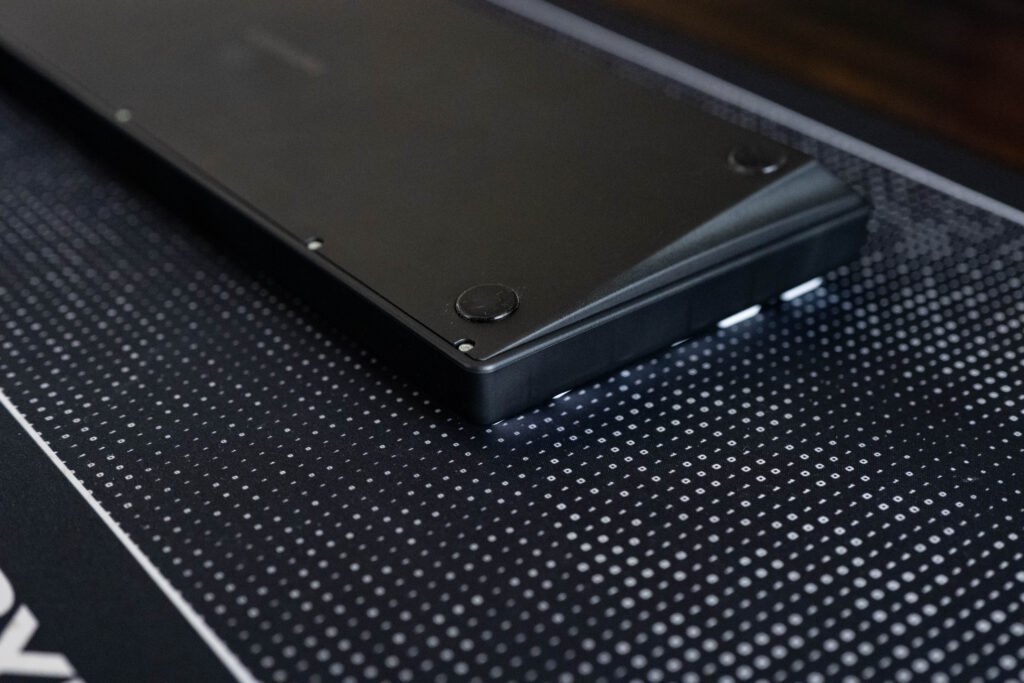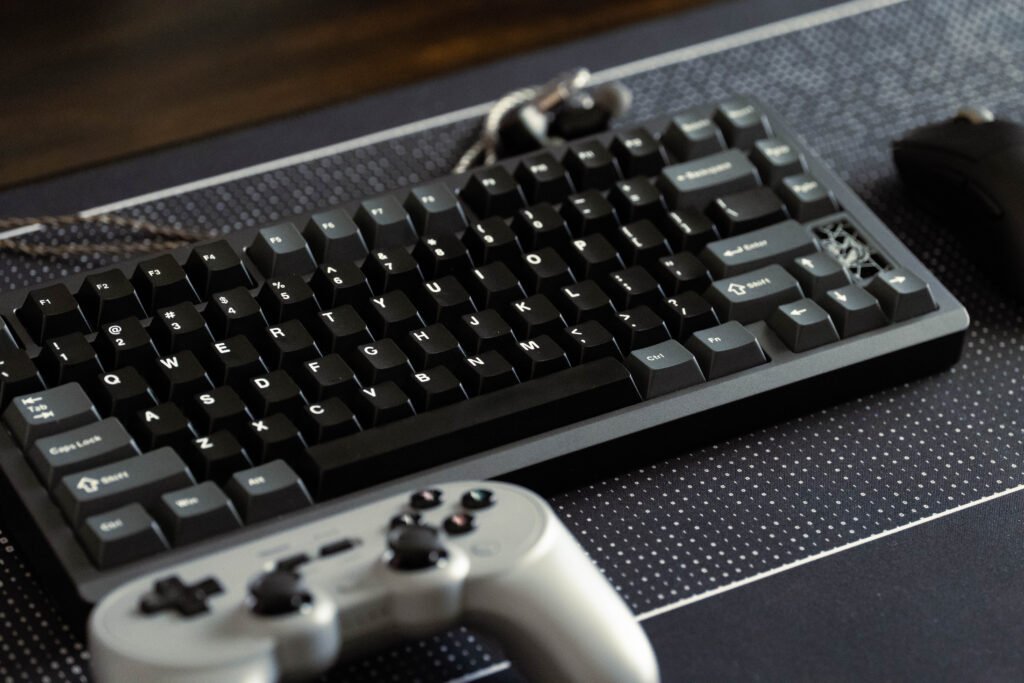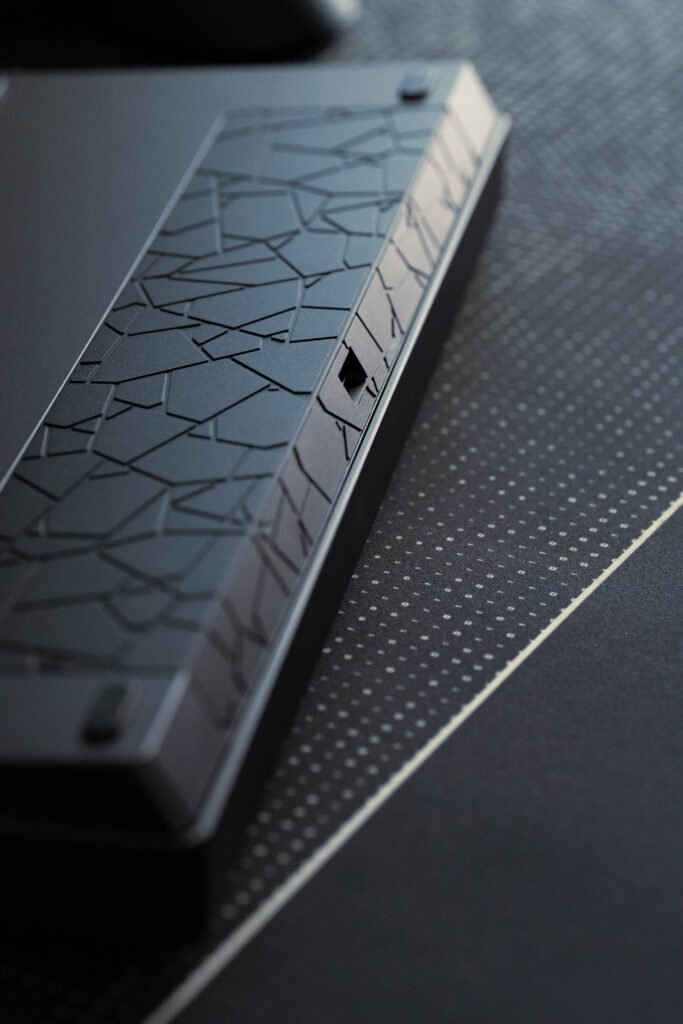
Introduction
In the past year, the custom keyboard scene has seen an exponential rise in hall effect keyboards and switches available to hobbyists. Even those who once swore by their classic cherry switches have been slowly making the turn towards hall effect, especially those who game competitively.
Though Wooting, Razer, and Steelseries have been making their hall effect keyboards for a few years now, it’s clearly taken a bit more time for the hobbyist scene to catch on. Hall effect deeply differs from MX despite their external similarities in that its most crucial aspect lies in its software. Without its software, hall effect barely has much gain over MX. While prebuilt hall effect keyboards in itself are nothing special, the convergence of hobbyist proclivities with hall effect’s utilitarianism are what have drawn me towards trying out two different models out currently: The Tiger Lite Gaming—a barebones, ABS plastic board by KBDFans with a Geonworks-made PCB— and the Slice75HE, Chilkey’s take on the budget HE prebuilt.
Introducing the Boards
The Venom PCB, which comes with the Tiger Lite Gaming, is a line of HE PCBs made by Geonworks that is made to fit in a myriad of third-party custom keyboards. While currently there are only Venom PCBs in TKL and 60% sizing, Geon has recently announced that a 65% PCB is also in the works. For keyboard builders, this was a dream come true: all of the HE features with none of the restrictiveness of prebuilts. Geon has also released two Hall Effect switches at competitive prices, such as the Geon Raw HE and Geon Lucifer HE.
While other custom keyboard brands like Qwertykeys and Matrix have taken a stab at Hall Effect, both were in such limited supply that it barely caught much attention.
Chilkey, a subsidiary brand of Wuque Studios, has established themselves as a maker of entry-level custom prebuilts with their array of aluminum, MX prebuilts and low profile prebuilts. In such a short time, their boards have found their way into the mainstream, being sold at local computer stores such as Central Computers and Computer Orbit. Like most prebuilts, they are not without their shortcomings. Unlike Qwertykeys’ line of entry-level barebones keyboards, the boards are still geared to be used as-is, even though you can easily disassemble them. The boards can sound hollow along the edges, and without foam, the sound is abysmally thin. Price-wise, however, they are hard to beat.
Chilkey’s Slice75HE reuses the design of their ND75, with a few noticeable adjustments. The screen is removed in place of a logo badge, and the backweight design now mirrors its ice-themed packaging. The Slice retains the same friendly ball-catch system though, just like its MX cousin.
Tiger Lite Gaming

Initially, Geon’s Venom software was only in Korean, as their PCBs were first tested within the Korean gaming market before expanding internationally. For this reason, alongside Geon’s very minimal marketing, the Venom PCBs have been slow to catch on. The software itself however gets regular updates and is fairly seamless as a web-app. Like any other web-based software, though, it is limited to certain browsers such as Chrome unfortunately, which makes me wish there was an application version. However, this is not unique to Venom’s software. Chilkey’s software suffers the same fate, with it not working at all on non-Chromium browsers.
The Tiger Lite Gaming case itself is sold and produced by KBDFans, who are known for their mass-produced successes such as Tiger Lite V1 and Tofu60. Both boards have seen a resurgence now due to the Wooting60, Venom60, and Venom TKL. The Tiger Lite Gaming can also be bought on many other international keyboard sites, though unfortunately it is not on sale on Geonworks’ site. Instead, off their site, you can get the Frog TKL, which also fits the Venom PCB. An HE Frog TKL build would probably be the high-end version of the Tiger Lite build, which feels much more entry-level.
When building the board, I found that installing the PCB into the Tiger Lite Gaming to possibly be slightly above the capabilities of first-time keyboard builders. I appreciated that the Venom PCB offers both an integrated USB port and a detachable one, but removing the detachable PCB from the PCB itself proved to take quite a bit of force, and I was a bit fearful of breaking the PCB. I probably would have preferred that to simply be given to me separately, or just two different TKL PCB options, but overall, Venom PCBs were never marketed for mass-appeal, so it is a small price to pay for an extremely affordable barebones HE board.
As an owner of the V1 Tiger Lite, it was a nice surprise to see the Tiger Lite brought back and usable within its housing. The updated version visually has no differences, aside from the top case now being F12 instead of F13. I would have liked for them to sell Tiger Lite Gaming top cases separately for V1 users, as I now cannot upgrade my V1 case to either Venom or their updated MX pcb, the Tofix. The build quality feels similar to V1, which was impressive to see given that the V1 originally cost twice the price of the current board. The Venom PCB of course raises this price to $89.99, but with the MX pcb, the Tiger Lite Gaming is only $54.99.

I built out the Tiger Lite with the included PE foam and plate foam, an FR4 plate, Aifei keycaps that I bought myself, and WS Flux switches, which were sent to me for free during a giveaway in a hall effect Discord server. Overall, the sound is on the higher-pitched side and fairly loud, due to my use of PE foam, long pole HE switches, and ABS keycaps. Unfortunately, most aftermarket HE switches are long pole, which makes it fairly difficult to make a quieter HE board with a softer bottom out experience. Perhaps due to its FR4 plate and HE switches, the sound is not as full as the V1 Tiger Lite, but for HE, it is a decent sound signature, definitely punching above its more mainstream competitors such as the Wooting60. Many HE boards these days come with a silicone mold at the bottom of the case to muffle the sound, but possibly to cut costs, the Tiger Lite does not have this. In my opinion, buying aftermarket foam such as Geon’s case foam will do the trick and accomplish ½ of what the silicone does, if you want it deeper and more muffled.
The included carrying case makes the Tiger Lite extremely easy to take with me. I’ve found myself reaching for this board whenever I head out for work, and it’s remained my travel board ever since building it.
I found the Venom PCB to be quite sensitive to input overall. Particularly I noticed how much more often I would accidentally mistype on the board. If all I was touching was WASD, it can be quite useful, especially when turning on the Venom’s version of “rapid trigger.” The functionality overall is on par with all the mainstream offerings currently, and the option of a classic TKL layout is particularly more inviting over Wooting’s more unusual take on the 80% layout.
Conclusion
If you’re in the market for a barebones HE board, you’ve built other boards before, and you want to prioritize portability and customizability, Tiger Lite Gaming’s price of $84.99 is very worthwhile.
8.5/10
Slice75HE

This board was sent to me for review, but I was not paid by Chilkey. All thoughts are my own.
The first thing I really appreciated about the Slice75HE was its aluminum build. Many gaming brands house their hall effect boards in very uninspiring plastic builds, or with such overt gaming aesthetics that it is unable to fit in any other type of setup. While Chilkey does have its logo displayed prominently on a badge in the lower right corner, overall, the design is a step up from a Wooting or Steelseries. Compared to many other entry level custom keyboard kits, the anodization and backweight is nothing to write home about. But the audience for a pre-built like Slice75 most likely is not as fussy as someone who only owns custom-built boards. In my opinion, their main competition truly is the Wooting. Keychron, Monsgeek, and others have taken their stab at Hall Effect, but I’ve seen many complaints online about Monsgeek’s hall effect software, and Keychron as well has had their fair share of issues.
The Slice software is far from flawless. But it is still very usable, and my experience using it did not detract from the overall experience. My issues mostly are nitpicks and somewhat are similar issues that I had with Venom’s software. I feel that making the software into an application would greatly increase usability in my opinion, or at least making the software usable outside of Chromium based browsers.

The included switches for the Slice75 are Gateron Jade Pro switches, which are considered some of the best HE switches on the market. The PBT keycaps also pleasantly surprised me. They have a nice texture to them that doesn’t feel too slippery or too rough. The RGB is also still bright enough that there is no need for shine-through caps. I personally appreciate non-shine through caps due to their increased longevity and quality. It’s rare to see gaming oriented boards use non-shine-though caps, so this was a welcome addition.
With all the included foams, the sound is fairly loud but not as high pitched as the Tiger Lite Gaming. However, it isn’t as deep as your classic MX board either. This is simply just a product of how HE works, and less-so the amount of foams included.I did find it interesting though that the Slice75 came with a plate “foam” made of cork, and an aluminum plate. I personally was not a fan of how the cork made the board sound, and I wish they had simply included normal foam with an FR4 plate, as this probably would have muted the sound better. The amount of foams included with this board however is quite substantial, so there really is no modding needed. It is definitely a board you can plug and play with, but it also is extremely easy to open up and swap switches if you want. The ball catch system is very well implemented, and I faced no issues with it. With some budget boards, the ball-catch can be an afterthought and not a main addition of the design, therefore making it a little more difficult to un-attach the top and bottom case from each other.

I decided to disassemble the board, remove all the foams, and put on my own PBT caps just to try out the sound, and it was not very pleasant without foams. It was so extremely hollow and loud. Probably the worst noise of them all was the spacebar, which sounded almost squeaky. Generally though, I don’t expect the average user to take apart the board and do this, so it is not a gigantic deterrent. Considering this is an aluminum HE board too, the hollowness of HE is only amplified that way.
Just like the Venom PCB and other mainstream HE boards, the Slice PCB was capable of “snappy tappy,” as Chilkey calls it, as well as the usual key remapping and changing of the actuation point.
Conclusion
If you play games mostly at your desktop, and you want a more premium feeling keyboard, the Slice75HE at its asking price of $189 keeps itself competitively priced while also adding some more welcome luxuries, such as its aluminum case, decent keycaps, and high quality HE switches. However, with Wooting80HE at $199, the question comes down to what you want to prioritize. Slice75HE is capable of everything the Wooting is, with only a few key differences in other areas. If this board was barebones, I probably would have harsher critiques of its design and logo badge, but in terms of price to value, and for the core buyers of this board, there are few complaints that I have.
7.5/10
Some Reflections
For me, one of the first key elements of Wooting that made me interested in their projects was the transparency the team had with their audience. Within the gaming scene, being able to connect with the makers of gaming products is a rarity. Seeing Wooting’s co-founder Calder appear in monthly vlogs on their Youtube channel, and taking their audience on tours through their manufacturing facilities, felt really special. It helped boost my confidence in Wooting delivering on what they promised their customers. Geonworks works in slightly similar ways, with regular updates posted in their Discord channel, and the occasional livestream for new products. For Chilkey, and Wuque generally, I feel this is where they are lacking. While I personally have been able to meet employees associated with Chilkey/Wuque, I cannot say the same for the general public. Wooting, along with other independent keyboard design teams, have set a high bar that I hope remains there, and pushes corporations within the keyboard space to follow in their footsteps.
